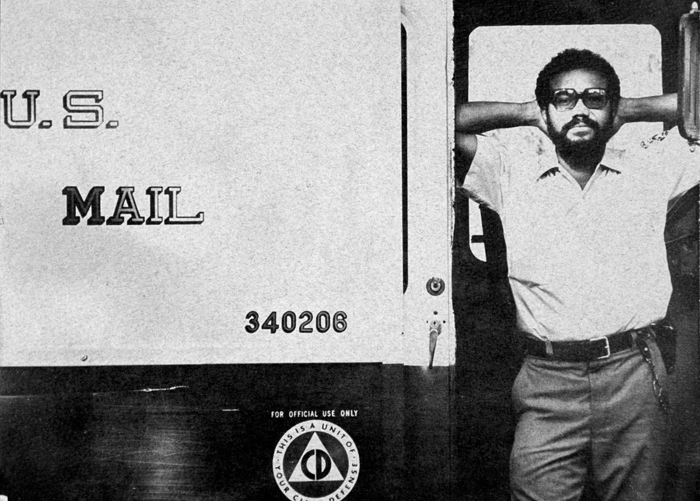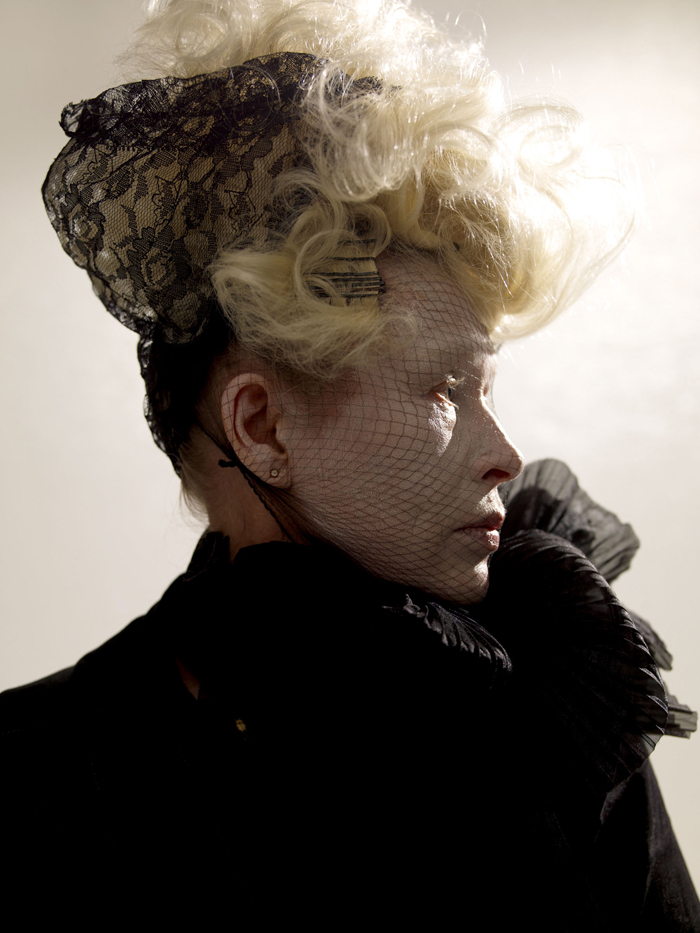
“We just thought it was a neat photograph… It just showed John. Obviously, he was a black man who drove a mail truck, and he was also an artist, and he was having an exhibition [at my gallery].” Suzanne Jackson, the source of this quote, opened Gallery 32 in Los Angeles near MacArthur Park in 1968 in order to exhibit her friends, many of whom were emerging African-American artists such as David Hammons, Betye Saar, Timothy Washington, and Senga Nengudi.
In part because of this photograph, which fronted the announcement flyer for the show, Stinson’s exhibition attracted a large crowd that included politicians, government workers, and fellow mail carriers spilling out of the packed gallery onto the street. The photograph highlighted the artist’s day job–a job that undoubtedly supported his painting. Here is an image of a working man who, like many of those in the crowd and probably many of us reading this journal, had a full-time job to support an aspiring alternative career. Ironically, Jackson missed the Stinson opening because she had to work at the Loser’s club on La Cienega Blvd., dancing to make ends meet and to keep her gallery up and running.
Damon Willick, Art Historian

I was recently given this photograph. I do know this person, but I could not account for what I was seeing in this image. This held for me a fascination with familiarity’s absence. Or more to the point, with the intimacy of that absence. It was an arresting moment, to see the familiar just as it receded unseen into the shadows. To watch as the visage ebbed, and with it that ceaseless compulsion of appearances. In its wake, a vacancy’s arrival. I saw then in this portrait the unaffected gaze of endless night as it fell away from darkness. The image compelled me to take leave of my senses. And while senseless, I suddenly saw the repose of another–someone I imagine I have met somewhere before. Not in that incalculable ambit of time where we would have remained in each other’s presence, but in that presence obscured by this meeting. That place, in this photograph, is where the image withdraws from its glare of the brilliant familiar.
Jordan Biren, Artist
